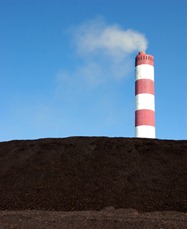Coal Plant Defeat in Eastern Kentucky Shows Us How
 Sometimes you win. But in Kentucky, it wasn’t just because the people who live in the area served by the East Kentucky Power Cooperative (EKPC) got lucky. They earned their good fortune the hard way: they worked for it. They worked together with each other and several powerful environmental organizations like the Sierra Club and more local groups like Kentuckians for the Commonwealth, and made their utility coop walk away from a coal-fired electric plant it was bent on building.
Sometimes you win. But in Kentucky, it wasn’t just because the people who live in the area served by the East Kentucky Power Cooperative (EKPC) got lucky. They earned their good fortune the hard way: they worked for it. They worked together with each other and several powerful environmental organizations like the Sierra Club and more local groups like Kentuckians for the Commonwealth, and made their utility coop walk away from a coal-fired electric plant it was bent on building.
Back in 2006, the EKPC was approval to build the new plant on the Kentucky River in Clark County. Long sections of the river are still bucolic stretches of meandering water edged with meadows and woods. It’s also a primary source of drinking water for the area through which it flows. The coop got the approval based on projected need for electricity in its region. Although that need had gradually evaporated,for several reasons, the coop continued its efforts to fund, permit and build the plant. Despite EKPC’s poor financial condition, much of the financing and most of the permits were in place.
One of the last steps was a hearing for a permit from the US Army Corps of Engineers that would allow the new plant to dump several million tons of coal ash annually into streams that feed into the Kentucky River. The fact that coal ash contains a number of hazardous chemicals including mercury and chromium had in the past not been considered a factor in allowing such dumping under current Kentucky law. The fact that the drinking water intakes for Lexington, Kentucky’s second largest city and an urban hub were only a few miles downstream from the proposed site was apparently also okay back in the days when the plant was originally approved.
The cooperative was founded in 1954 and currently includes 16 member utilities that serve some half-million customers. Every customer in the coop’s region is a member of the cooperative. The primary mandate of the coop was to keep its members’ energy costs as low as possible. But like all large organizations, its drive to be bigger had apparently overrun its commitment to its members. The EPA found that EKPC also failed to consider less polluting options such as natural gas, energy conservation and renewable energy, although they were required to do so by law.
Part of the defeat of the coal plant was due to the recession. Part of it was due to a growing awareness that coal is not cheap; it has disastrously expensive consequences for the health and environment of the area in which a coal plant operates. But most of all it was due to the efforts of local citizens to understand what was happening and to give knowledgeable and informed testimony to what needed to be done. Finally there was the basic fact: much of the energy EKPC’s members consume is wasted: heat and cooled air leak through badly sealed walls; poorly designed and inefficient heating and cooling systems squander a large part of the power they burn; and many of our appliances, large and small, have poor energy efficiency. Saving that energy in eastern Kentucky instead of burning more coal will make a big difference for the region.


